Black tourmaline and obsidian may seem like simple stones at first glance, but don’t be fooled! They each have their own secret stories, like two different books with dark covers.
In this article, we’ll share with you the similarities and differences between black tourmaline and obsidian. We’ll dig into the nitty-gritty of what makes these stones look and behave the way they do.
Just like people, rocks have their own history and characteristics that make them special and here, we’ll compare black tourmaline vs obsidian. It’s not just about being shiny or pretty— there’s a whole lot more to these stones than meets the eye.
So, get ready to zoom in and discover the hidden wonders of black tourmaline and obsidian. This is going to be a learning adventure that’ll rock your world!
Black Tourmaline vs Obsidian – The Major Differences
Just because they’re both dark in color doesn’t mean that comparing obsidian vs black tourmaline will yield more similarities than differences. You might even be surprised to know that these two are more different than they are alike.
Color – Black tourmaline is consistently deep black
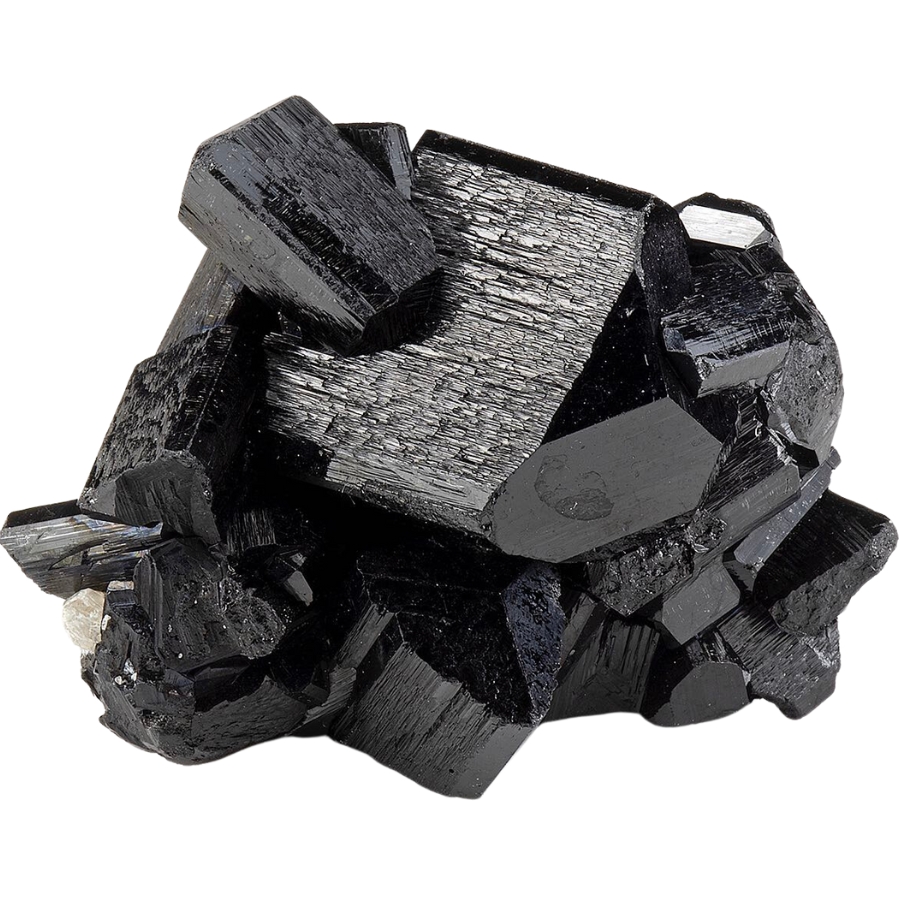
When you look at black tourmaline and obsidian side by side, you might think they’re just two black stones. But if you look a little closer, you’ll see the colors are not exactly the same.
Black tourmaline is like the deep, dark night sky without a star in sight. It’s the kind of black that seems to absorb all the light around it.
Sometimes, if you hold it up to the light, you might catch a glimpse of brown or even a slight hint of other dark colors hiding within it.
On the flip side, obsidian can remind you of a piece of the night sky that’s got the moon shining on it, giving it a shiny, glassy look. It’s like looking into a dark, still pond at night.
If the light hits it just right, you might see silver or even rainbow colors reflecting back at you. That’s because obsidian can have tiny bubbles or bits of stuff inside that catch the light in a special way.
Luster – Obsidian has a vitreous luster
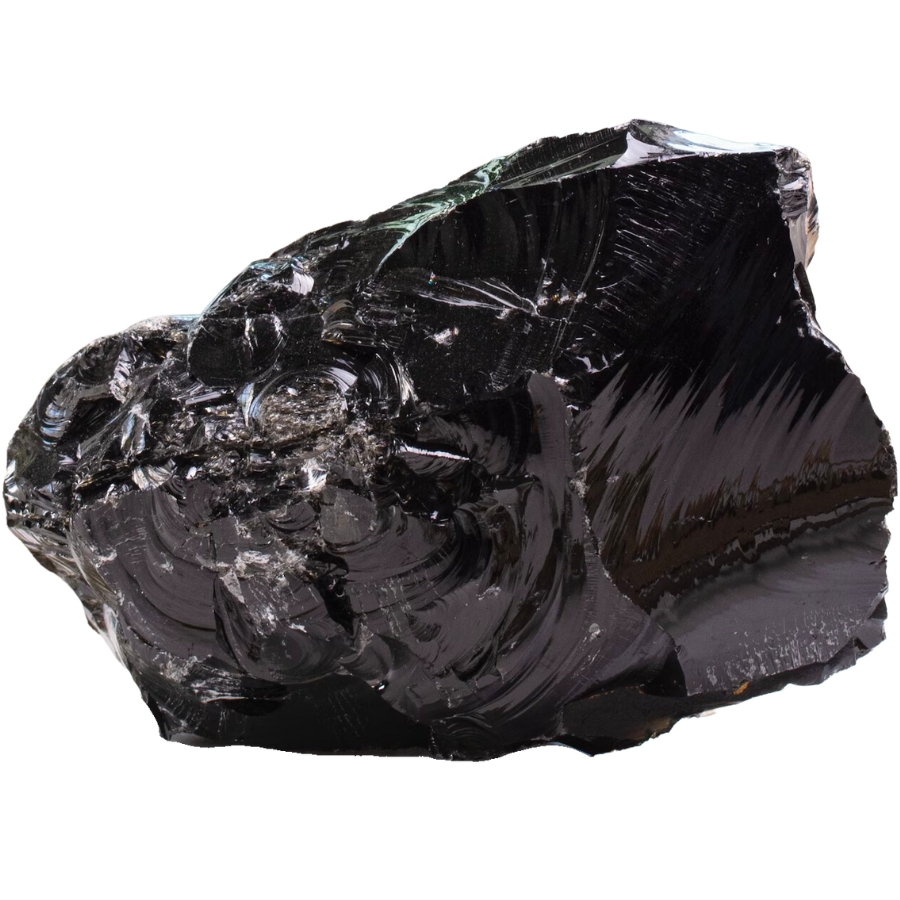
When you’re checking out rocks, the luster is their special way of shining. Black tourmaline and obsidian have their own unique sparkle.
If you pick up a piece of black tourmaline, you might notice it has a sort of glow that’s not too shiny but not too dull either called a submetallic to resinous luster.
It’s like when you see a piece of wood that’s been polished. It has a nice sheen, but it doesn’t reflect light like a mirror.
But obsidian is a whole different story. It’s got this super shiny look that’s so bright and clear that you could almost see your reflection in it.
This is called a vitreous luster. And if black tourmaline is like polished wood, obsidian is like a piece of shiny black glass.
Crystal Structure – Black tourmaline forms prismatic and striated crystals
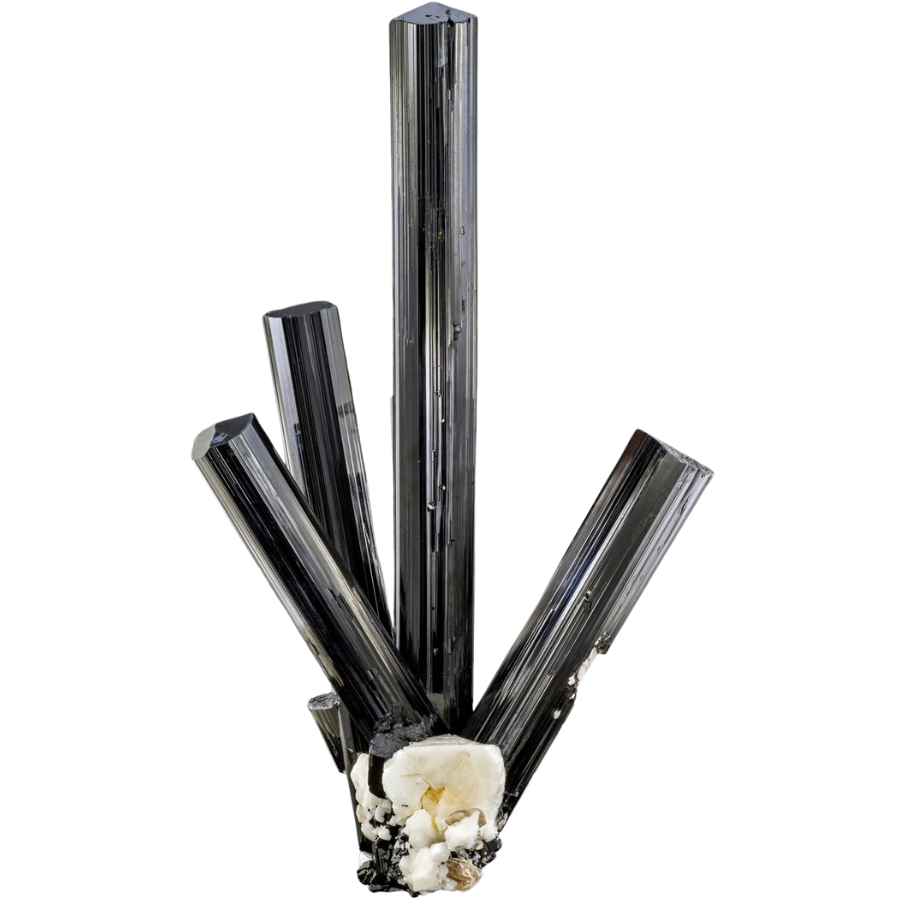
Imagine a crystal structure as a secret recipe that nature uses to make each type of rock.
Black tourmaline follows a recipe that creates something like a three-sided pencil made of tiny building blocks. These blocks stack up in a pattern that repeats over and over, making the crystal grow long and narrow.
If you look closely, you might see ridges or stripes running along the length of the black tourmaline, like the grooves on a record. These are the signs of its inner crystal structure showing up on the outside.
But obsidian doesn’t play by the crystal rule book. It’s like frozen chocolate syrup; it cools down so fast that the atoms don’t have time to set up in a neat pattern. Instead, they freeze in place all willy-nilly, with no order.
This makes obsidian what scientists call ‘amorphous,’ which means it doesn’t have a crystal structure. If black tourmaline is like a box of neatly stacked books, then obsidian is like a pile of magazines tossed on a table, all random and jumbled.
Because of this, obsidian looks smooth and feels like glass, while black tourmaline feels more like a rough stone because you can feel those tiny structures on the surface.
Cleavage – Obsidian has no cleavage
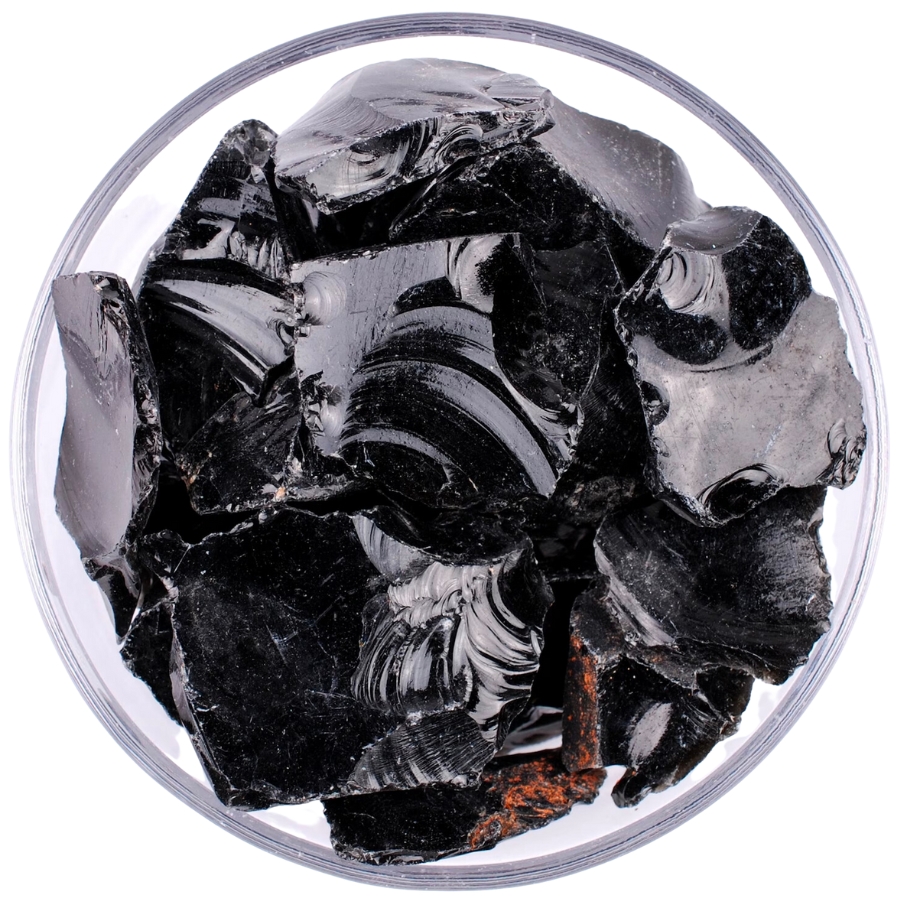
In the rock world, cleavage is all about how a rock breaks. It’s like how some things snap in straight lines and others just sort of crumble or crack any which way.
If you tried to break a black tourmaline, it wouldn’t snap neatly along flat, straight lines. It has what’s called poor cleavage.
Imagine trying to break a piece of thick rope. It frays and splits but doesn’t snap cleanly. That’s because the tiny bits inside black tourmaline aren’t arranged in a way that makes it easy to break smoothly.
Now, if you think about breaking something like a piece of window glass, you know it kind of shatters into sharp pieces with curvy edges, right? That’s how obsidian breaks. It doesn’t have cleavage, so it doesn’t break along flat planes.
Instead, it fractures in what we call a conchoidal way, which means it breaks in curves. If you’ve ever seen a piece of shattered glass from a broken window, those curved breaks are like what happens with obsidian.
This is because, unlike black tourmaline, obsidian doesn’t have a crystal structure making it break in any particular pattern.
Hardness – Black tourmaline is more resistant to scratching
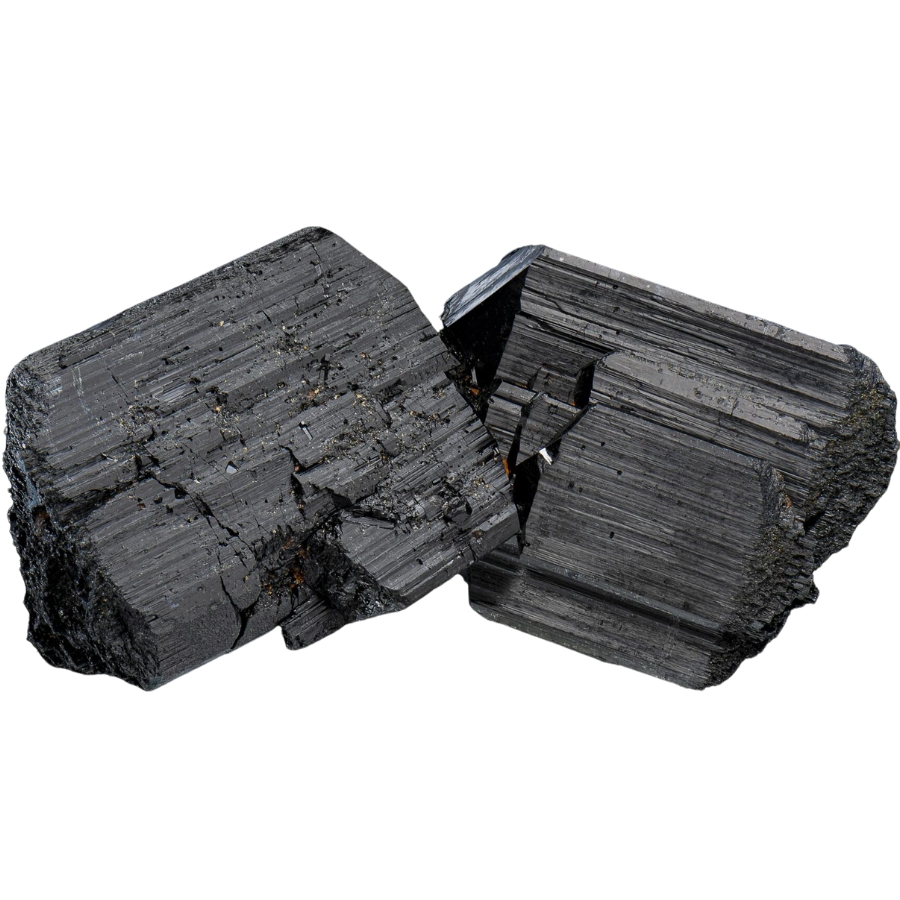
Hardness is a measure of how tough rocks are against scratching. If rocks were in a superhero movie, hardness would be their strength level.
Black tourmaline is pretty tough. It’s hard enough to scratch glass, which means it ranks pretty high on the hardness scale.
The Mohs Hardness Scale measures just how hard a rock is. On this scale, black tourmaline scores between 7 and 7.5 out of 10. That’s like being able to lift a small car in our superhero movie.
Obsidian, though, is not quite as tough as black tourmaline. It can still scratch some things, but not as many as black tourmalines can. It scores about a 5 to 6 on the Mohs scale, which is like being able to lift a motorcycle but not a car.
That means if you took a piece of black tourmaline and scratched it on obsidian, it would leave a mark. But if you tried to do it the other way around, the obsidian wouldn’t be able to scratch the black tourmaline.
Density – Obsidian has a lower density
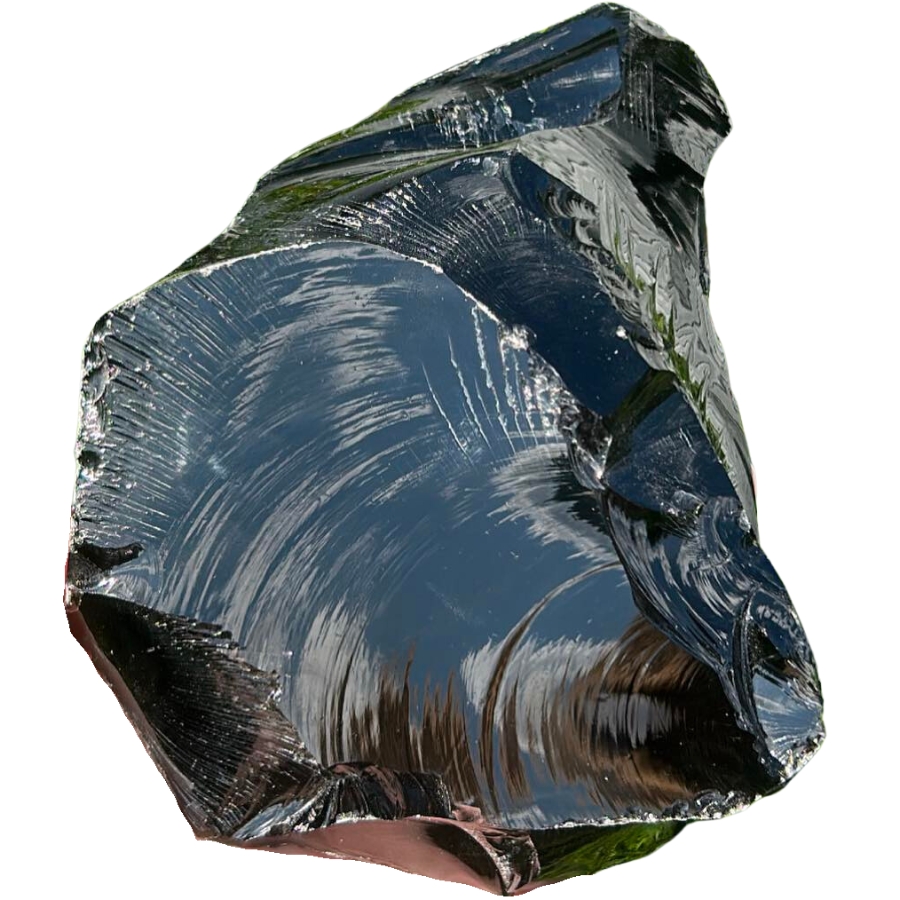
When you think about density, you’re thinking about how much stuff is packed into a rock. It’s like comparing a suitcase stuffed with clothes to one that’s half-empty. The more stuff, or the heavier the stuff packed inside, the denser the suitcase is.
Black tourmaline is like that suitcase that’s packed tight. It’s got a lot of heavy elements inside, which makes it denser.
On a scale, it would weigh more for its size compared to lots of other rocks. That’s because the materials that make up black tourmaline are naturally heavier.
Obsidian, on the other hand, is like a suitcase that’s not so full. It’s got less stuff packed inside, and the stuff isn’t as heavy. It’s still a rock, but it’s not as dense as black tourmaline.
Obsidian is a kind of volcanic glass, not a crystal, and this makes it lighter in weight for its size. So if you had a chunk of black tourmaline and a chunk of obsidian that were exactly the same size, the black tourmaline would feel heavier in your hand.
Streak – Black tourmaline leaves a brownish or slightly bluish/greenish streak
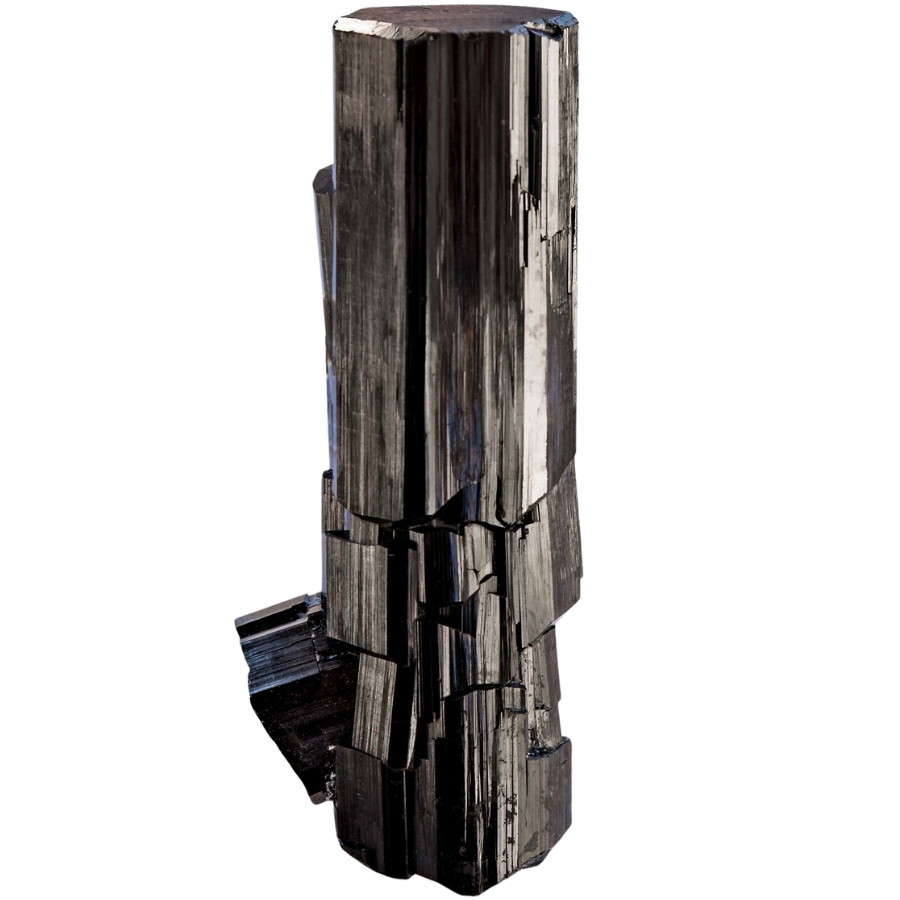
When you’re out rock hunting, one of the coolest tests to do on a rock is the streak test. This refers to the color of the line it makes when it’s scratched on a special plate.
Black tourmaline and obsidian might fool you because they both look super dark, almost like pieces of the night sky, but their streaks tell a different story.
Black tourmaline, when you scratch it across a streak plate, won’t leave a black line like you might think. Instead, it surprises you with a brownish or sometimes even a dark bluish or greenish line.
It’s not super bright or colorful, but it’s definitely not the same as the rock’s dark exterior.
Then if you take obsidian and do the same thing, dragging it across a streak plate, you’d expect a dark streak, right? But nope, it leaves a streak that’s colorless or white.
This pale streak is because, unlike black tourmaline, obsidian is made mostly of one thing, silicon dioxide, which doesn’t add color to the streak.
Composition – Obsidian is primarily silicon dioxide
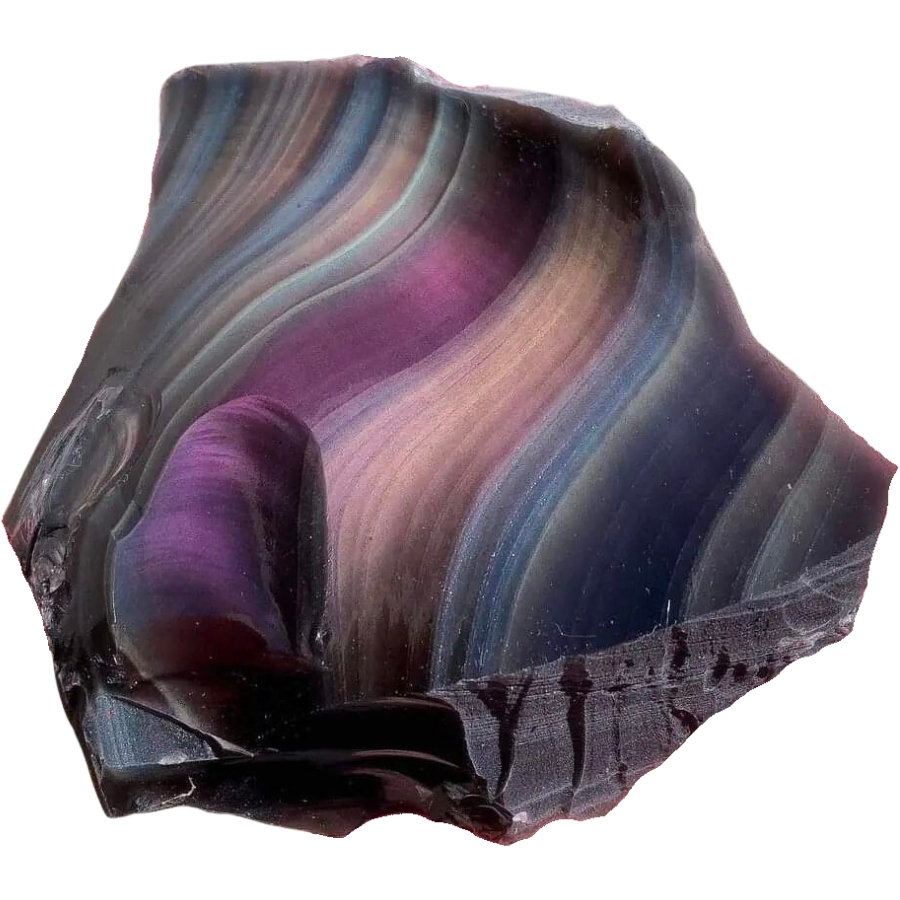
If rocks were cakes, their composition would be the recipe, and just like cakes can have all sorts of ingredients, so can rocks.
Black tourmaline has a pretty complex recipe. It’s made of a bunch of different things, including minerals like iron, magnesium, and even aluminum.
These are all mixed up with something called boron, and together they create a mineral called a silicate. This mix is what gives black tourmaline its heavyweight and dark color.
On the other hand, obsidian’s recipe is simpler. It’s mostly made of just one main thing: silicon dioxide, which is also found in quartz. But obsidian isn’t like the quartz crystals in a science class; it’s more like the glass in your kitchen window.
When a volcano erupts, the lava cools down super fast, and the silicon dioxide doesn’t have time to form into crystals, so it becomes a smooth, glassy rock instead.
Formation – Black tourmaline forms when high-temperature minerals crystallize
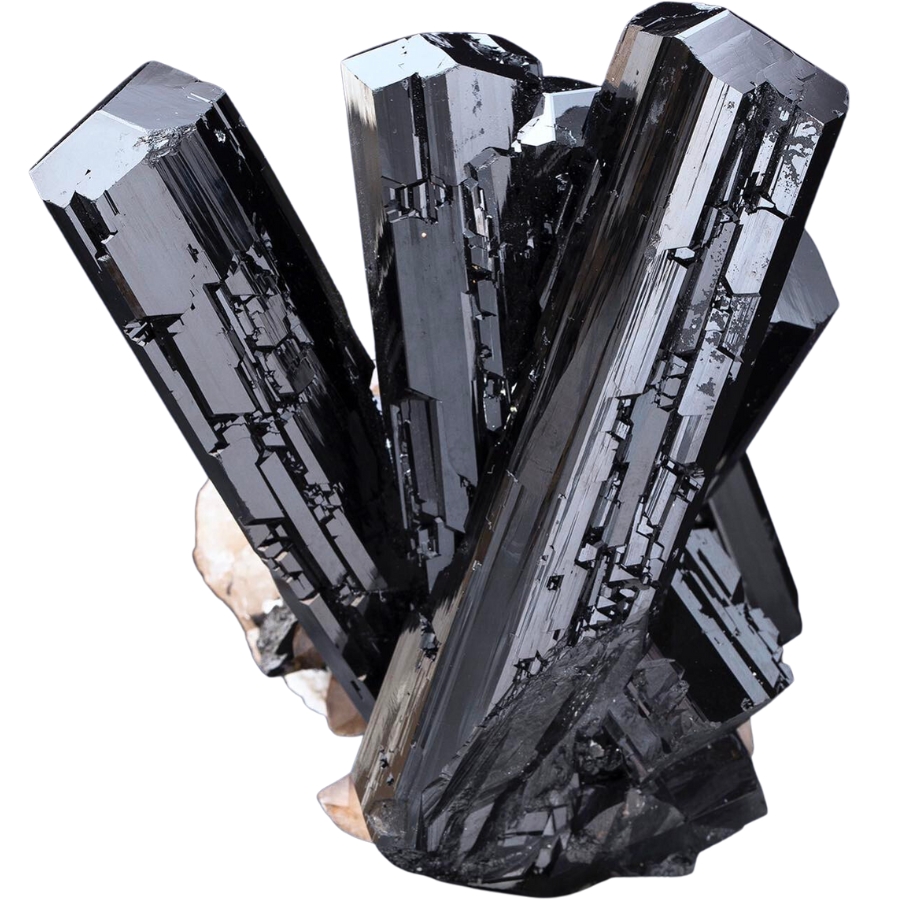
When you think about how different rocks are made, it’s kind of like thinking about how different kinds of cookies are baked. Some take a long time in the oven, and some are no-bake and chill in the fridge.
Black tourmaline is like a cookie that takes a long time to bake. It forms deep underground where it’s really hot, and there’s a lot of pressure.
This happens in places called pegmatites, which are like underground bakeries for making cool crystals. The heat and pressure cook up the minerals over a long time until they grow into black tourmaline.
Obsidian, meanwhile, is like the no-bake cookie. It forms when a volcano erupts and spits out lava. This lava is super hot, like the syrup you pour over a snow cone. But instead of cooling slowly, it chills super fast when it hits the air or water.
It cools so quickly that the minerals don’t have time to grow into crystals, and it turns into a glass instead. That’s why obsidian looks shiny and smooth, like a piece of black glass you’d find on the beach.
Magnetism – Obsidian is generally not magnetic
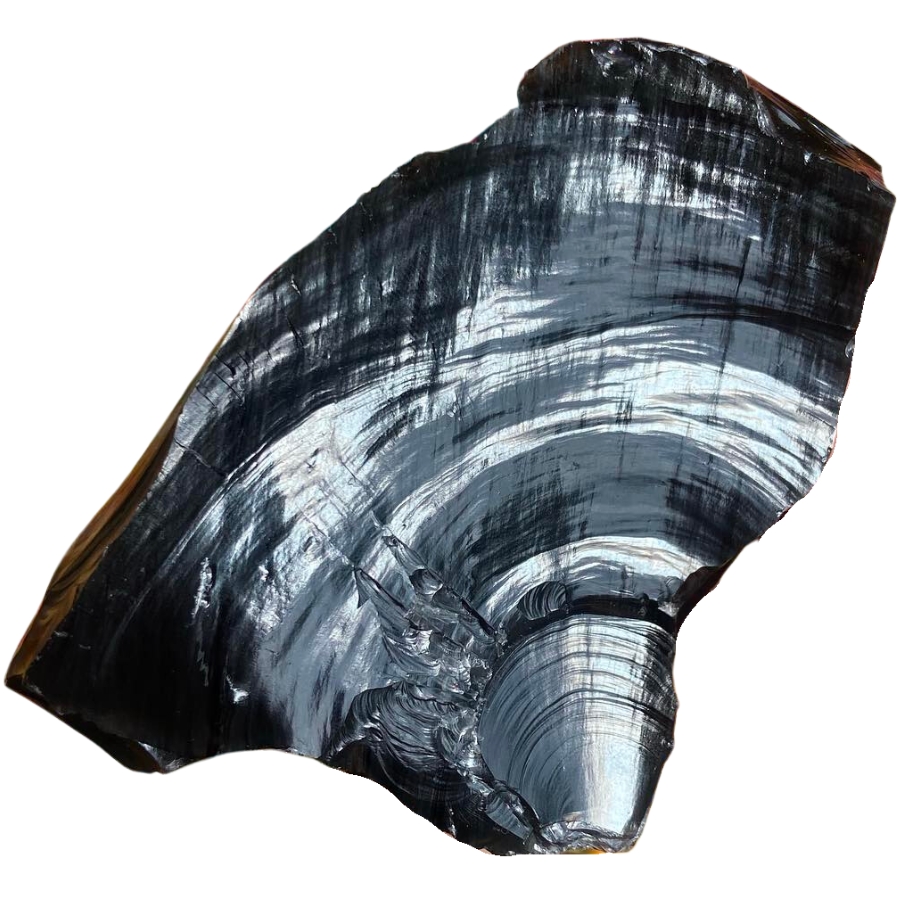
Magnetism in rocks might sound like a magic trick, but it’s actually a pretty cool science.
Black tourmaline can have magnetic properties, which means it can attract or be attracted to a magnet. Not all black tourmaline has these powers, but some do, especially if they contain iron.
Iron is the ingredient in a rock that gives it its magnetic abilities. So, if you have a piece of black tourmaline with enough iron in it, you might see it act a little like a magnet would.
However, obsidian doesn’t usually have this magnetic touch. That’s because it’s mostly made of stuff that isn’t magnetic. But here’s where it gets interesting: sometimes, it can have tiny bits of minerals inside it that are magnetic.
These are like little specks of different stuff mixed into the obsidian. But usually, these bits are so small and spread out that they don’t make this rock act like a magnet at all.
Conductivity – Black tourmaline is pyroelectric and piezoelectric
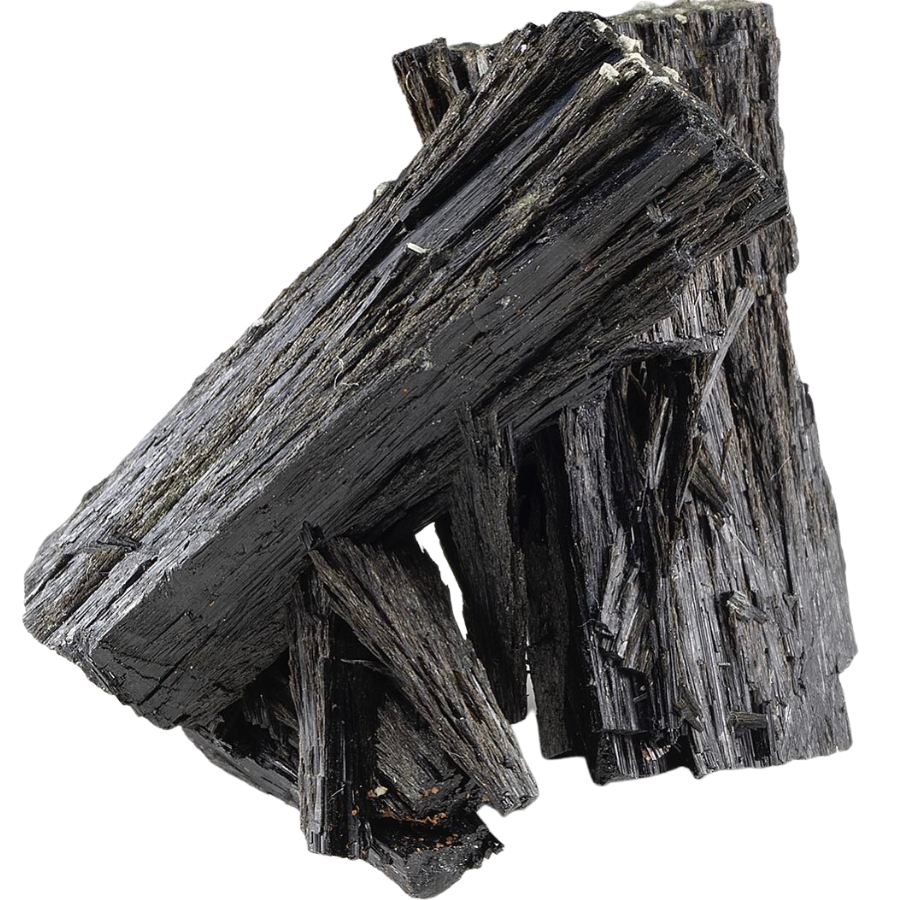
When we talk about conductivity in rocks, we’re talking about whether electricity can travel through them. Imagine electricity as a bunch of tiny race cars. Some rocks are like wide-open highways for them and others are like blocked roads.
Black tourmaline is quite an interesting rock because it doesn’t let those electric race cars through easily. It’s what scientists call a poor conductor.
But it can actually become electrically charged when it’s heated up or when pressure is applied to it. It can hold an electric charge under certain conditions. That’s a unique feature called piezoelectricity, which means “pressure electricity.”
Obsidian, on the other hand, is more like a road with lots of traffic cones— it doesn’t conduct electricity at all. This volcanic glass is an insulator, meaning it’s good at stopping those electric race cars in their tracks.
So, if you had a piece of obsidian and you tried to pass an electrical current through it, the current wouldn’t go anywhere. It’s just not in this rock’s nature to let electricity flow.
Location – Obsidian stays close to volcanoes
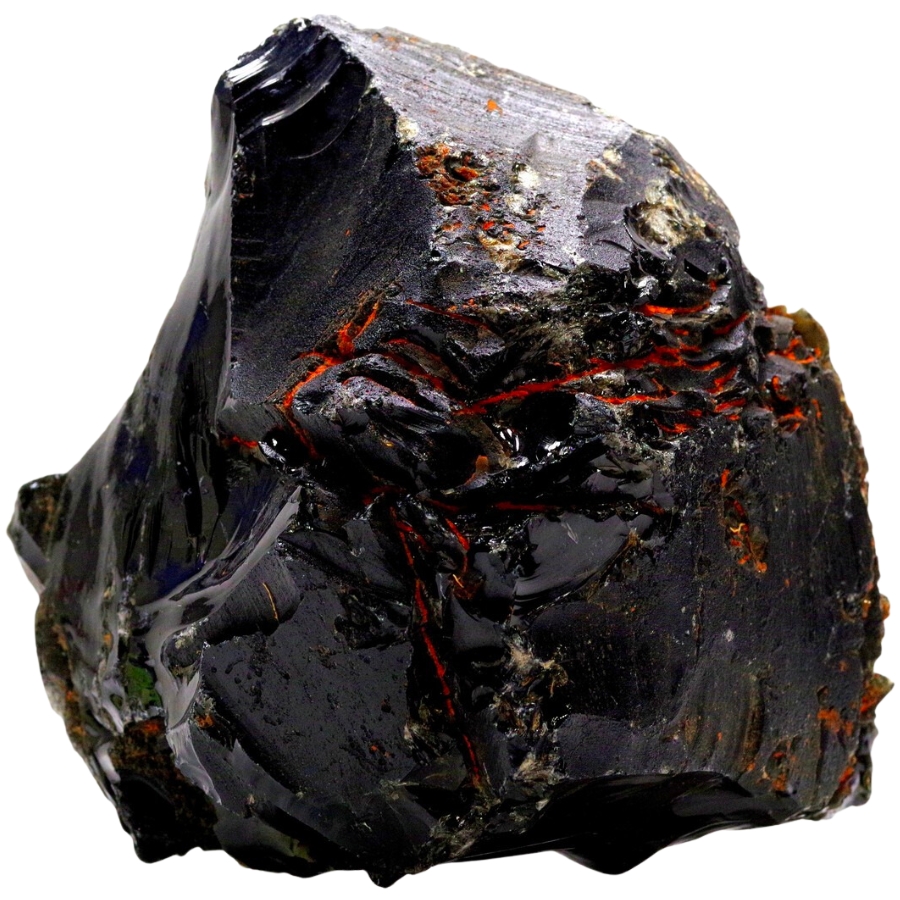
Black tourmaline is a well-traveled rock. It’s found in a bunch of different countries. You can dig it up in Brazil, where it lies in the ground with other gemstones. It’s also in African countries like Namibia and Nigeria.
Even in the U.S., you might find it in California or Maine. To know more places where you can find black tourmaline near you, check out our guide on that. You can also refer to our crystal hunting guide in the U.S.
This rock gets around because it forms in a variety of environments, from long tubes of underground rocks called pegmatites to areas where rocks have been changed by a lot of heat and pressure over time, which geologists call metamorphic rocks.
In comparison, obsidian is more of a homebody and likes to stay close to where volcanoes are found because that’s where it comes from. You can find it in places with lots of past or present volcanic activity.
In the United States, the best places to find obsidian include Oregon and Idaho. It’s also in countries with famous volcanoes, like Iceland and Italy, and in places like Mexico and Japan. For the best rockhounding locations, check out this guide.
Price – Black tourmaline is often more costly but not expensive
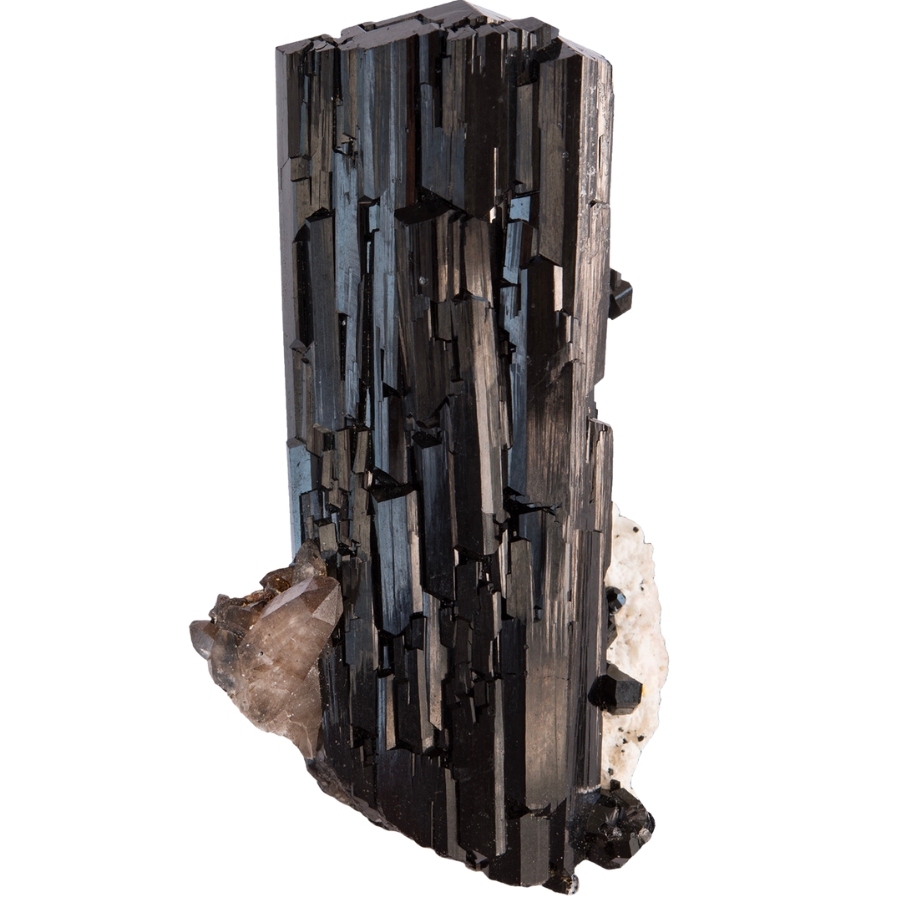
When it comes to the price of black tourmaline and obsidian, there’s a bit of a difference, and it all comes down to how rare they are and how they’re used.
Black tourmaline isn’t exactly the most expensive gem out there, but it can still fetch a good price. This is because it’s pretty popular in jewelry and as a collectible.
The more perfect and shiny it is, the higher the price of black tourmaline can be. Sometimes, if it has something special about it, like it’s really clear or it has a cool shape, people might pay more for it.
Obsidian, though, is usually on the cheaper side of things. It’s not because it’s not as pretty or cool, but it’s a lot more common than black tourmaline. There’s plenty of it around, especially near old volcanoes.
But, just like with black tourmaline, there are special kinds of obsidian that can be worth more. For example, if it has a neat pattern or if it’s been shaped into something like a sharp arrowhead, the value of obsidian can shoot up.
The thing is, both of these rocks can be found in big chunks or made into jewelry or art. The more work that goes into making them look nice, the more they’ll cost.
Black Tourmaline vs Obsidian – The Similarities
Now that you know the differences between black tourmaline and obsidian, let’s proceed to their similarities, which is noticeably fewer (clue: there’s just one!) and less obvious than their differences.
Fluorescence – Obsidian and black tourmaline do not typically fluoresce
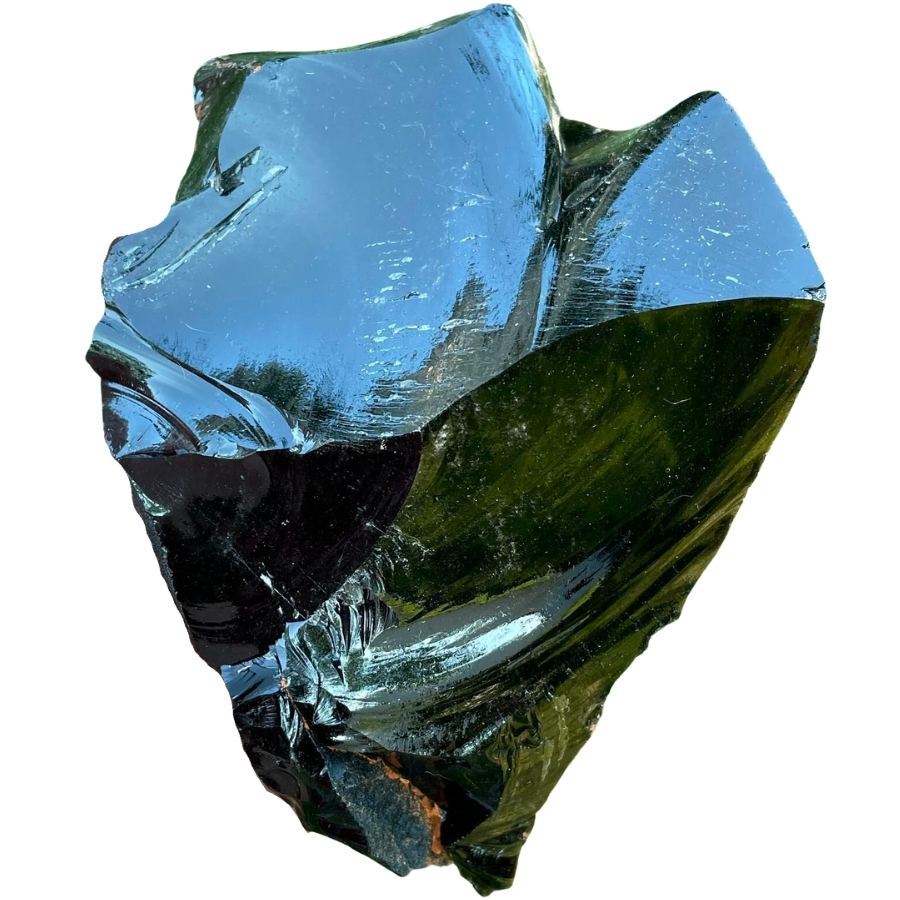
Fluorescence is a feature in some minerals where they glow under ultraviolet light, kind of like glow-in-the-dark stickers. But black tourmaline and obsidian have something in common: they don’t really have this glow-up moment.
When you shine a UV light on them, they’re both going to stay pretty much the same. They won’t light up like a neon sign or anything.
It’s like if you were at a dance with a blacklight, some clothes would look super bright, but black tourmaline and obsidian would be those quiet ones in the corner, not reacting to the light.
This lack of fluorescence in both of them is because they don’t have the right stuff inside to glow. Some minerals can turn UV light into visible colors, but black tourmaline and obsidian aren’t on that team.
Whether you have them under the sun or a UV light, they’re going to look pretty much the same.
The Easiest Ways To Tell Black Tourmaline And Obsidian Apart
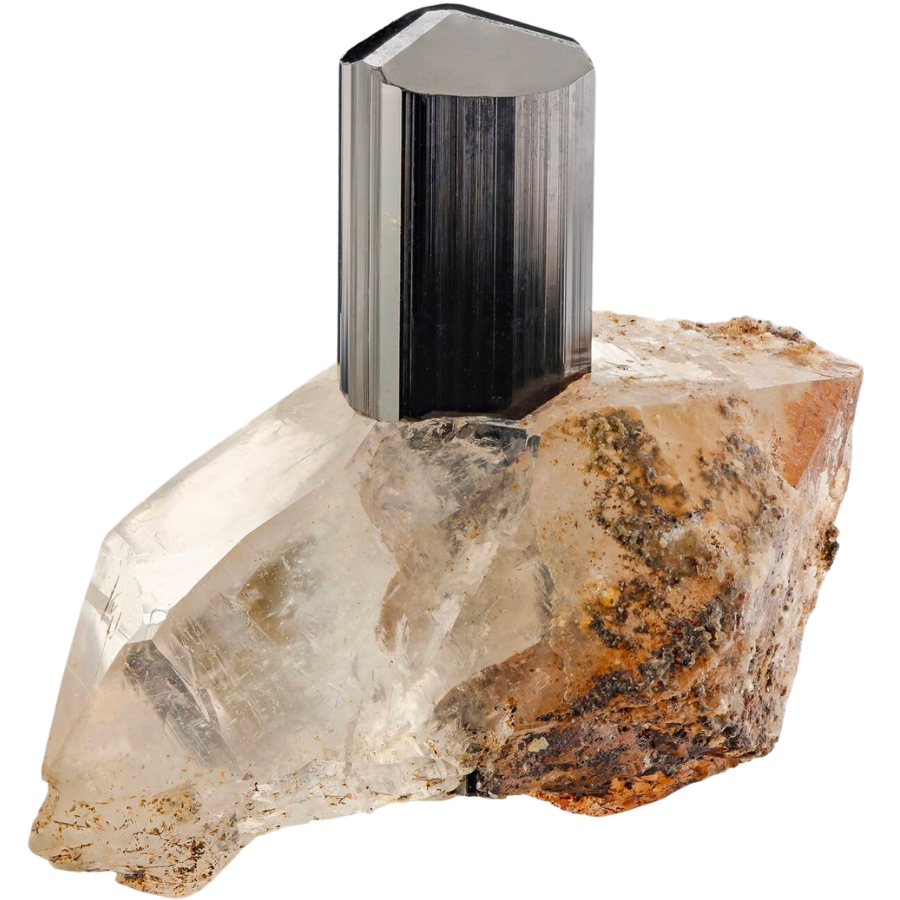
Let’s say you have a rock that you suspect is either a black tourmaline or an obsidian, how can you tell for sure which of it your specimen is? Here are a few simple tests (you wouldn’t need special equipment!) that you can do:
Check out its shine
Looking at the shine, or how a rock reflects light, can be a great way to tell black tourmaline and obsidian apart.
If you hold your rock up to a light source and it’s an obsidian, you’ll see that it has a very glossy finish. It’s like looking at a calm lake under the moonlight, with the surface reflecting a clear image back at you.
But if it’s black tourmaline, it won’t reflect light as clearly. Its shine is more subdued, resembling the sheen of a well-used chalkboard. There’s a bit of gloss, but it won’t give you a mirror-like reflection.
Feel its texture
When you glide your fingers over your rock and it’s obsidian, it feels smooth as glass, because that’s essentially a volcanic glass. It has a slick surface that’s often cool to the touch.
If you run your nail across it, it should feel as smooth as if you were running it across a window pane.
In contrast, if it’s black tourmaline, it will feel different. Its surface isn’t so uniform, so it might feel slightly gritty or bumpy because of its complex structure and the presence of ridges or grooves.
Look for the lines
Another visual clue to say whether your rock is a black tourmaline or obsidian is the presence of lines.
If you examine black tourmaline closely, you might notice it often has subtle, yet visible, striations— these are like fine lines or grooves that run lengthwise along the stone. These aren’t just random marks; they’re part of its natural crystal structure.
But if what you’re holding is an obsidian, it won’t show these kinds of lines. Its surface is usually uniformly smooth, without the linear markings that characterize black tourmaline.
Its breakage pattern might sometimes create lines on the surface of a broken piece, but these will be more jagged and random, not the parallel, orderly striations found on tourmaline.


